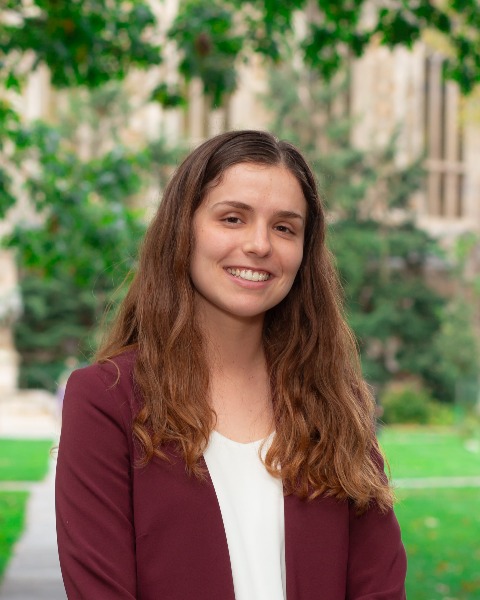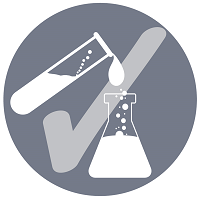Formulation and Delivery
Rapid Fires: Enabling Technologies and Materials for Formulation Innovation 2
Drugs as Excipients: Colistin as Dual-Function Inhalable Excipient
Tuesday, November 11, 2025
3:30 PM - 3:45 PM CT
Location: Stars at Night B2/B3

Mariana Romero-Gonzalez, MS
PhD Student
University of Michigan
Ann Arbor, Michigan
Rapid Fire Speaker(s)
Multidrug-resistant Gram-negative infections are among the toughest challenges in modern medicine, particularly in patients with chronic lung disease. Even when potent antibiotics exist, delivering them to the site of infection at effective levels remains a challenge. Niclosamide and colistin are two such agents: together, they demonstrate powerful synergy, yet individually they are constrained by poor solubility, low permeability, and systemic toxicity. These challenges have kept a promising therapeutic combination from being further developed.
This session showcases an innovative approach to reimagining how we develop new drug products. Instead of relying on layers of excipients and complex solvent systems, we asked: what if one of the drugs could also serve as the excipient? By embracing this unconventional idea, we developed an excipient-free antisolvent precipitation method that transforms niclosamide and colistin into stable microparticles designed for inhalation. The result is a high-loading, streamlined formulation that sidesteps the pitfalls of traditional drug delivery methods.
At the heart of this innovation lies colistin. Beyond being an antibiotic, colistin sulfate proves itself as a natural surfactant; its amphiphilic, polycationic structure enables it to act as a stabilizer in the formation of niclosamide crystals. This discovery reframes colistin not just as a therapeutic, but as a dual-purpose tool: simultaneously a drug and a functional excipient. It’s a conceptual leap that challenges long-held assumptions in pharmaceutical science, suggesting that “inactive” ingredients may not always need to be inactive.
This perspective opens a new design space for drug delivery: excipient-free, dual-role formulations where molecules serve a double purpose. Such strategies can simplify manufacturing, reduce potential safety concerns, and unleash the full therapeutic potential of drug combinations that were once thought incompatible. It represents a shift away from “making drugs fit formulations” toward “making formulations fit the drugs.”
Attendees will leave with a new way of thinking about formulation science. Key takeaways include:
• How to turn solubility challenges into opportunities for innovation.
• Why colistin’s chemical nature makes it an unexpected but effective stabilizer.
• How excipient-free methods can maximize drug loading and streamline inhalable therapies.
• How this strategy could inspire the reinvention of other “difficult-to-deliver” drug combinations.
By the end of the session, participants will see how creative formulation design can open new avenues for overlooked compounds and expand the arsenal against multidrug-resistant pathogens. More importantly, they will be challenged to think differently: to blur the boundaries between “drug” and “excipient,” and to embrace unconventional approaches that could define the next generation of therapies.
This session showcases an innovative approach to reimagining how we develop new drug products. Instead of relying on layers of excipients and complex solvent systems, we asked: what if one of the drugs could also serve as the excipient? By embracing this unconventional idea, we developed an excipient-free antisolvent precipitation method that transforms niclosamide and colistin into stable microparticles designed for inhalation. The result is a high-loading, streamlined formulation that sidesteps the pitfalls of traditional drug delivery methods.
At the heart of this innovation lies colistin. Beyond being an antibiotic, colistin sulfate proves itself as a natural surfactant; its amphiphilic, polycationic structure enables it to act as a stabilizer in the formation of niclosamide crystals. This discovery reframes colistin not just as a therapeutic, but as a dual-purpose tool: simultaneously a drug and a functional excipient. It’s a conceptual leap that challenges long-held assumptions in pharmaceutical science, suggesting that “inactive” ingredients may not always need to be inactive.
This perspective opens a new design space for drug delivery: excipient-free, dual-role formulations where molecules serve a double purpose. Such strategies can simplify manufacturing, reduce potential safety concerns, and unleash the full therapeutic potential of drug combinations that were once thought incompatible. It represents a shift away from “making drugs fit formulations” toward “making formulations fit the drugs.”
Attendees will leave with a new way of thinking about formulation science. Key takeaways include:
• How to turn solubility challenges into opportunities for innovation.
• Why colistin’s chemical nature makes it an unexpected but effective stabilizer.
• How excipient-free methods can maximize drug loading and streamline inhalable therapies.
• How this strategy could inspire the reinvention of other “difficult-to-deliver” drug combinations.
By the end of the session, participants will see how creative formulation design can open new avenues for overlooked compounds and expand the arsenal against multidrug-resistant pathogens. More importantly, they will be challenged to think differently: to blur the boundaries between “drug” and “excipient,” and to embrace unconventional approaches that could define the next generation of therapies.
Learning Objectives:
- Upon completion, participants will be able to describe a cationic surfactant's role as a stabilizer in liquid antisolvent precipitation
- Upon completion, participants will understand basic crystal formation and growth principles
- Upon completion, participants will be able to describe the multifunctionality of a cationic peptide drug like colistin as both a pharmacologically active agent and as an excipient


